Zia al Haq may have been a reserved and courteous man but he was a total music freak when it came to Bollywood-Rap compositions. As we bounced our way from Gupis to Gilgit along the Gilgit River gorge, I could not help but think how incongruous this scene was of us in a jeep, in no other than the so-called highly dangerous country of Pakistan, with a DVD player blaring Bollywood-Rap mixed music. "You want moooore......? Are you suuuure......?" screamed a female singer. "Yes, yes, yes!" the audience shrieked back. The song would then repeat itself until she asked the same question again. And so the process would continue. In other words, the same music blasted us for the entire trip from Gupis to Gilgit.
Over the top of the loud music Sadruddin kept us entertained with his outrageous sense of humour. It was a lot of fun and we had to admit that we did enjoy it all, even the music. I even tried to buy some Bollywoood-Rap music in Karimabad. In hindsight I think Alan was pleased they did not stock it in the general stores. Perhaps, on our next visit...
The road from Gupis to Gilgit followed the rushing grey rapids and the deep gravel beds of the Gilgit River; it's fate to eventually join with the Naltar and Hunza Rivers and become part of the mighty Indus River network. The drive was again through pretty scenery and the road, where it had not succumbed to the terrible 2010 floods, was sealed if rather bumpy and narrow. Again, the valleys were lush and fertile. Brilliant green wheat crops were in head and sheep, goats and cattle grazed within the patchwork of stone walled paddocks. People mostly walked the road, often leading cattle or carrying firewood. Some used donkeys as transport.
We crossed numerous suspension bridges over the Gilgit River. The evidence of the devastating 2010 floods was apparent everywhere. Washed away roads, ruined bridges and massive loads of river gravel had been dumped along the river banks and across the main road.
In mid July 2010, heavy monsoon rains in the North West Frontier, Sindh, Punjab and Balochistan regions of Pakistan caused unprecedented flooding along the Indus River basin. Approximately one fifth of the country, or almost 800,000 square kilometers of land was under water, affecting some 20 million people and resulting in a death toll in excess of 2,000. The Pakistani economy was shattered by the disaster through widespread damage to property, crops and infrastructure. The total cost was estimated to be as much as US$43 billion.
The Pakistani people suffered badly that year. Earlier, in January 2010 a massive landslide at Attabad village in Gilgit-Baltistan (formerly known as the Northern Areas) killed 20 people and blocked the flow of the Hunza River (flowing from the north of Pakistan) for five months. The resulting lake flooded over 20 kilometers of the Karakoram Highway, the main highway from the China border in the north to Islamabad, and displaced some 6,000 people from upstream villages. The lake now spans roughly 25 kilometers of the valley and has totally submerged a number of villages and bridges in the Gojal District, as well as permanently blocking the Karakoram Highway. The only means of travelling the length of the highway is now by boat, which presents serious problems with regard to food, hospitals and other services for people located on its northern side. We were to witness first hand the lake and our somewhat off-beat boat trip on our way from Karimabad to the China border (refer following entry "Our Man From Waziristan or Titanic!").
And if all these disasters were not enough, this year, the Sindh District, Pakistan's food bowl in the south, was again severely flooded leaving 200,000 people homeless and nearly 300 people dead.
The Pakistani people must some times wonder what they have done to deserve such an appalling fate. Apart from the shocking natural disasters, Pakistan of course continues to be politically volatile nation precariously subject to the pressure of complex internal conflict and a long history of discord with its neighbours. The resurgence of the Taliban, a broken economy and a struggling infrastructure, together with an ineffectual and allegedly corrupt government, a headstrong military and an all powerful, shadowy and largely uncontrolled Inter-Service Intelligence Agency (ISA)makes for almost insurmountable problems for this poor country. And the vast majority of Pakistani local people have no choice other than to bravely battle on and try to better their lives for themselves and their families.
We were surprised by the number of police security check points on our way. At times it seemed that they were only kilometers apart. Luckily Sadruddin had photocopied twenty copies of our passports and travel documentation but even that proved not to be enough.
At one stop, two armed police guards stared into the jeep looking suspiciously at Alan and me for some time, and then conversed seriously with Sadruddin. Mostly, we had found the police to be friendly and polite, but not in this particular instance. Apparently, two Blackwater personnel (alleged mercenaries from the US Blackwater company which contracts private military and security services in international conflict zones) had been sighted in the area and the police were on high alert looking for them. Thankfully, we must not have looked too much like mercenaries.
Further on we stopped alongside the river and spoke to some young children fishing. The river looked dangerous, with steep banks, deep gravel beds and frequent rapids. But nothing seemed to faze these kids. Their catch was mainly a type of jelly fish. When asked if they ate them, one of the older boys looked at me incredulously as if to say "Would you ask the same question of a child holding an ice cream?". But he politely answered that they did. We found the children in Pakistan to be curious, friendly and polite. As in our own country, the boys were far more outgoing, with the young girls being much more shy and retiring. Most children we met spoke excellent English.
We arrived in Gilgit Town around midday. This was our second visit to Gilgit and we were keen to explore more of what is now the administrative headquarters of Gilgit-Baltistan and a major business hub on the Karakoram Highway.
Gilgit-Baltistan Autonomous Region is the northern most political entity in Pakistan. It borders the North West Frontier Province to the west, Afghanistan's Wakhan Corridor to the north, China to the east and north-east, Azad Kashmir (Pakistan controlled Kashmir) to the south-west and the Indian administered Kashmir and Jammu to the south-east. The Region is divided into the Baltistan districts of Skardu and Ghanche, and the Gilgit districts of Gilgit, Ghizar, Diamir, Astore and Hunza-Nagar. The Region encapsulates the meeting place of the Karakoram, Pamir, Hindu Kush and Himalaya Mountain ranges, some of the highest mountains in the world. Five peaks are in excess of 8,000 meters and more than 50 are above 7,000 meters. The Region has a population of nearly one million.
We were again connected with the Old Silk Road trading routes. Numerous petroglyphs and inscriptions along what is now the Karakoram Highway reveal that this route was used by invaders, traders and pilgrims as far back as 5,000 BC. In more recent times, the area was under the rule of the British Raj but subject to bitter fighting with India over the control of the areas of Kashmir, Azad and Jammu. Following the Indo-Pakistani War of 1947, Pakistan occupied the territories to the north and west of the cease fire line and the territory was then divided into the Pakistan controlled Northern Areas (Gilgit-Baltistan) and Azad, and the Indian administered Jammu and Kashmir. In 2009 the Pakistani government granted self rule to the former Northern Areas, re-named it Gilgit-Baltistan and created an elected legislative assembly.
Gilgit is home to the main Muslim branches of Sunni, Shiite and Ismaili and has suffered considerable sectarian violence in the past. In 1988 Sunni-Shiite hostility exploded into virtual warfare at Bagrot, some 50 kilometers from Gilgit, and violence erupted from 1992 to 1994 in Gilgit, and then again in 2005.
When we visited Gilgit Town in 2009 we were surprised at the overwhelming police and military presense, and it was somewhat disarming to see military snipers based in sandbags on the roofs of the shops. There was a distinct underlying tension and the local people were not at all friendly. In fact we could detect a degree of hostility toward us, especially by the older men who stared disapprovingly at us - particularly at me.
That afternoon, we heard that poor weather conditions had prevented Ishaq Ali from flying from Islamabad to Gilgit where he was to join us for the remainder of our tour. It was yet another reminder of how unpredictable air travel can be in the northern districts of Pakistan. We just hoped that he would be able to fly out the next day and meet us in the Hunza.
Later in the day, we spent some time with Sadruddin wandering the dusty streets of Gilgit Town. Unlike our former visit two years before, the town looked more relaxed. There were fewer police and the locals were friendly. We were keen to find a gift of lapis lazuli for our house sitter Shirley but decided that a string of locally mined and cut rubies was more "her". It was Saturday afternoon and to our disappointment, most of the shops as well as the local bazaar were closed.
Gilgit is well known for its polo and its ferocious competition with the Chitral team in the annual Shandur polo match. Open areas around the town were filled with riders excerising their polo ponies, most which looked to have a considerable component of English Thoroughbred (as in the breed) breeding. Proficient with their polo skills, the riders looked deadly serious about their training as they walloped their polo sticks at a furious pace around the parks. The ponies were in very good condition, both fit and relaxed.
Late in the afternoon we sat with Sadruddin in the lovely rose gardens of the Riveria Hotel, enjoying tea and an occasion to relax after our long journey over the last days. We were soon joined by one of the hotel cats.
Totally self possessed and not overly friendly, she politely accepted small morsels of food but only just put up with being nursed. A true cat in the company of true cat tragics....
The Riveria Hotel is centrally located in Gilgit Town near the river, has delightful gardens, great food and friendly service. To end a rather lovely day, during a balmy evening we enjoyed a wonderful four course dinner on the outside balcony of the hotel - joined of course by our feline friend.
You Want More.....? Are You Sure.....?
Sunday, May 08, 2011
 Gilgit, Gilgit-Baltistan, Pakistan
Gilgit, Gilgit-Baltistan, Pakistan
Other Entries
-
16Perceptions of Persepolis: Grandeur of the Ruins
Apr 2414 days prior Shiraz, Iranphoto_camera8videocam 0comment 0
Shiraz, Iranphoto_camera8videocam 0comment 0 -
17Photo Gallery of Persepolis and Naqsh-E Rostam
Apr 2414 days prior Shiraz, Iranphoto_camera16videocam 0comment 0
Shiraz, Iranphoto_camera16videocam 0comment 0 -
18Today: The First Day of the Remainder of Your Life
Apr 2513 days prior Kerman, Iranphoto_camera16videocam 0comment 0
Kerman, Iranphoto_camera16videocam 0comment 0 -
19Yazd - Such a Lovely Place, Such a Lovely Place...
Apr 2711 days prior Yazd, Iranphoto_camera14videocam 0comment 0
Yazd, Iranphoto_camera14videocam 0comment 0 -
20Toward Esfahan - "The Jewel of Ancient Persia"
Apr 2810 days prior Esfahan, Iranphoto_camera34videocam 0comment 0
Esfahan, Iranphoto_camera34videocam 0comment 0 -
21A Gorgeous Carpet, Jolfa and Fascinating Abyaneh
Apr 308 days prior Abyaneh, Iranphoto_camera9videocam 0comment 0
Abyaneh, Iranphoto_camera9videocam 0comment 0 -
22Photo Gallery of Abyaneh Village
Apr 308 days prior Abyaneh, Iranphoto_camera13videocam 0comment 0
Abyaneh, Iranphoto_camera13videocam 0comment 0 -
23Destination Tehran - Reflections on our Travels
May 017 days prior Tehran, Iranphoto_camera13videocam 0comment 0
Tehran, Iranphoto_camera13videocam 0comment 0 -
24Osama bin Laden Dead - Our Travel Plans in Chaos
May 026 days prior Dubai, United Arab Emirates, United Arab Emiratesphoto_camera11videocam 0comment 0
Dubai, United Arab Emirates, United Arab Emiratesphoto_camera11videocam 0comment 0 -
25For Better or For Worse - We Head off to Islamabad
May 035 days prior Islamabad, Pakistanphoto_camera4videocam 0comment 0
Islamabad, Pakistanphoto_camera4videocam 0comment 0 -
26Eclectic Chitral - North West Frontier Province
May 044 days prior Chitral, Pakistanphoto_camera14videocam 0comment 0
Chitral, Pakistanphoto_camera14videocam 0comment 0 -
27The Wonderful Faces of Chitral Town
May 044 days prior Chitral, Pakistanphoto_camera8videocam 0comment 0
Chitral, Pakistanphoto_camera8videocam 0comment 0 -
28A Four-Seater Jeep, Six People & Two Kalashnikovs
May 053 days prior Bomburet, Pakistanphoto_camera15videocam 0comment 1
Bomburet, Pakistanphoto_camera15videocam 0comment 1 -
29Love Affair with Rumbur, A Sick Jeep Trip to Buni
May 062 days prior Buni, Pakistanphoto_camera9videocam 0comment 0
Buni, Pakistanphoto_camera9videocam 0comment 0 -
30Insight into the Life of the Lost Kalasha People
May 062 days prior Buni, Pakistanphoto_camera8videocam 0comment 3
Buni, Pakistanphoto_camera8videocam 0comment 3 -
31More Photos of the Kalasha Peoples
May 062 days prior Buni, Pakistanphoto_camera14videocam 0comment 0
Buni, Pakistanphoto_camera14videocam 0comment 0 -
32Tandoori Chicken, Potatoes & Eggs at Shandur Pass
May 071 day prior Gupis, Pakistanphoto_camera23videocam 0comment 0
Gupis, Pakistanphoto_camera23videocam 0comment 0 -
33You Want More.....? Are You Sure.....?
May 08 Gilgit, Pakistanphoto_camera14videocam 0comment 1
Gilgit, Pakistanphoto_camera14videocam 0comment 1 -
34Heaven on Earth at Eagle's Nest Hotel, Duikar
May 091 day later Duikar, Pakistanphoto_camera19videocam 0comment 1
Duikar, Pakistanphoto_camera19videocam 0comment 1 -
35The Solitude of a Dawn in Duikar
May 102 days later Karimabad, Pakistanphoto_camera10videocam 0comment 3
Karimabad, Pakistanphoto_camera10videocam 0comment 3 -
36Photo Gallery of Karimabad and the Hunza Area
May 102 days later Karimabad, Pakistanphoto_camera22videocam 0comment 2
Karimabad, Pakistanphoto_camera22videocam 0comment 2 -
37Our Man From Waziristan or "Titanic!"
May 113 days later Sost, Pakistanphoto_camera20videocam 0comment 0
Sost, Pakistanphoto_camera20videocam 0comment 0 -
38A Public Bus Over the Khunjerab Pass Into China
May 113 days later Khunjerab Pass, Pakistanphoto_camera21videocam 0comment 0
Khunjerab Pass, Pakistanphoto_camera21videocam 0comment 0 -
39Our Top Tips for Crossing the Khunjerab Pass
May 124 days later Khunjerab Pass, Chinaphoto_camera2videocam 0comment 0
Khunjerab Pass, Chinaphoto_camera2videocam 0comment 0 -
40At Home in Lovely Tashkorgan - We Find Hunza Man
May 135 days later Tashkorgan, Chinaphoto_camera12videocam 0comment 0
Tashkorgan, Chinaphoto_camera12videocam 0comment 0 -
41Two Taxis and a Slow Trip to Kashgar
May 146 days later Kashgar, Chinaphoto_camera10videocam 0comment 0
Kashgar, Chinaphoto_camera10videocam 0comment 0 -
42Evocative Old Kashgar
May 157 days later Kashgar, Chinaphoto_camera8videocam 0comment 0
Kashgar, Chinaphoto_camera8videocam 0comment 0 -
43Photo Gallery of Kashgar
May 157 days later Yarkand, Chinaphoto_camera18videocam 0comment 0
Yarkand, Chinaphoto_camera18videocam 0comment 0 -
44Southern Silk Road - Tracking the Taklamakan
May 168 days later Keriya (Yutian) , Chinaphoto_camera16videocam 0comment 0
Keriya (Yutian) , Chinaphoto_camera16videocam 0comment 0 -
45Tazhong - Drawing Chickens in the Taklamakan
May 179 days later Tazhong, Chinaphoto_camera23videocam 0comment 0
Tazhong, Chinaphoto_camera23videocam 0comment 0 -
46Desert Devils of the Taklamakan
May 1810 days later Korla (Bayingol), Chinaphoto_camera11videocam 0comment 0
Korla (Bayingol), Chinaphoto_camera11videocam 0comment 0 -
47Toward Urumqi - Siamese Mountains and Wind Farms
May 1911 days later Urumqi, Chinaphoto_camera3videocam 0comment 0
Urumqi, Chinaphoto_camera3videocam 0comment 0 -
48A Day in Urumqi and The Fabulous Erdaoqiao Markets
May 2012 days later Urumqi, Chinaphoto_camera6videocam 0comment 0
Urumqi, Chinaphoto_camera6videocam 0comment 0 -
49R & R in the Extraordinary City of Shanghai
May 2113 days later Shanghai, Chinaphoto_camera10videocam 0comment 0
Shanghai, Chinaphoto_camera10videocam 0comment 0 -
50A Remarkably Unremarkable Journey Home
May 2315 days later Crowdy Head, Australiaphoto_camera1videocam 0comment 1
Crowdy Head, Australiaphoto_camera1videocam 0comment 1
Comments
2025-05-22
Comment code: Ask author if the code is blank

 Gilgit, Gilgit-Baltistan, Pakistan
Gilgit, Gilgit-Baltistan, Pakistan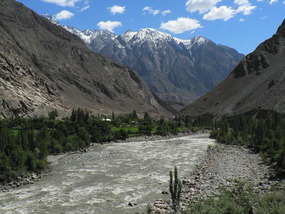
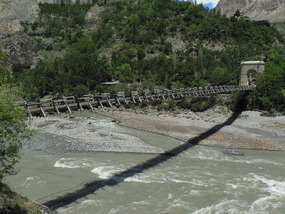
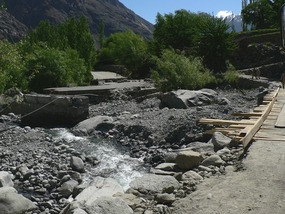
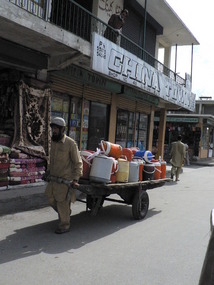
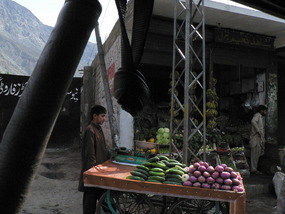
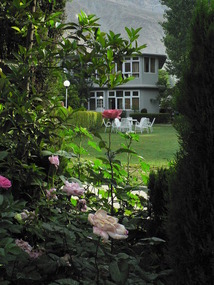
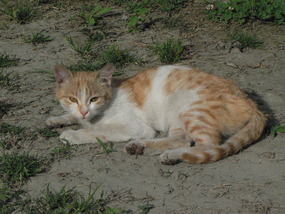

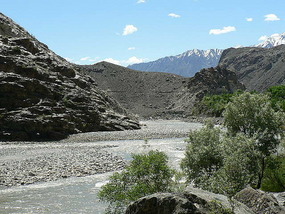
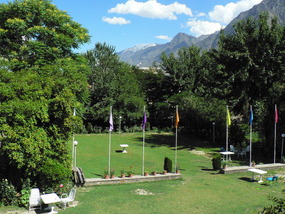
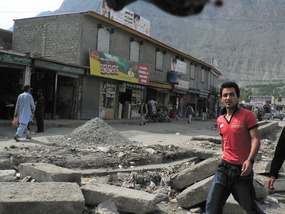
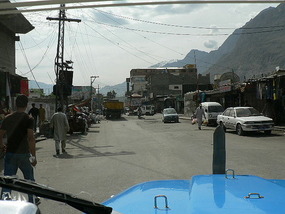
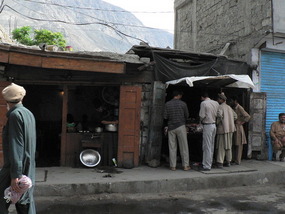
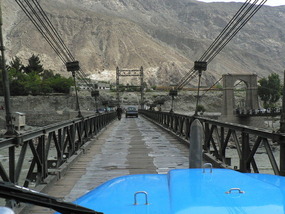





Col(r) Kaiser
2012-01-07
I went by Air to Gilgit from Islamabad on 6 July 2011,then on to Hunza and Attaabad lake on the 10th of July. Had to travel back by road. I wish I had met you.